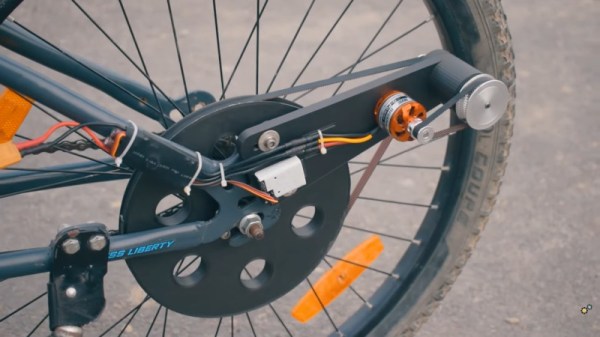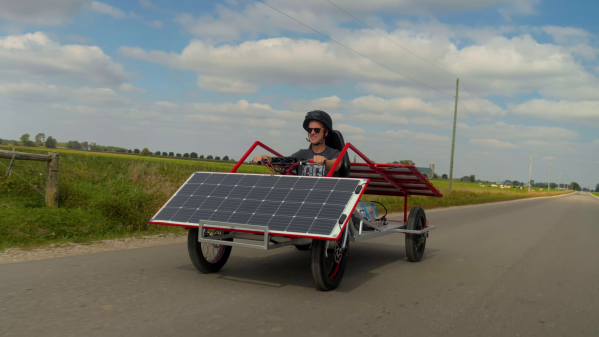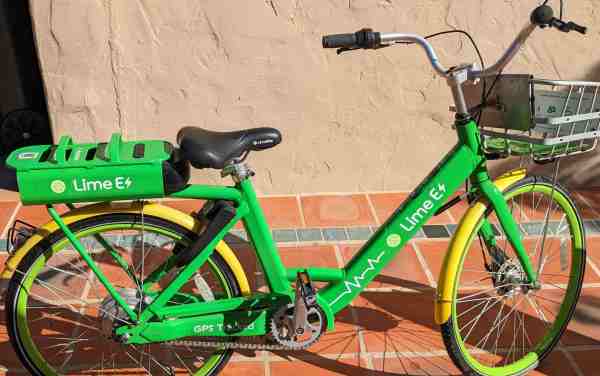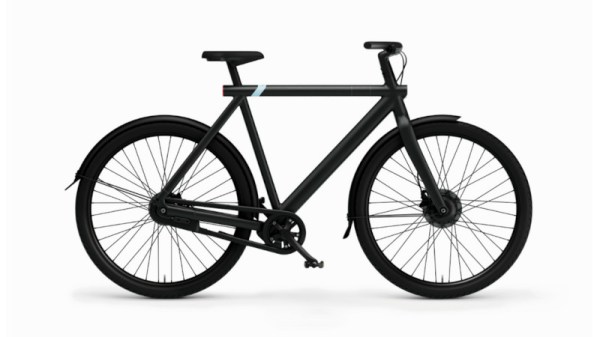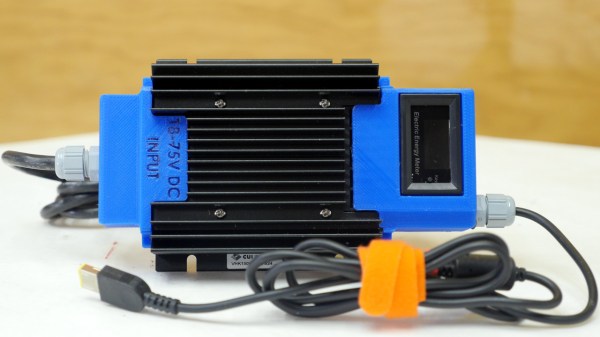On paper, the motors from both an electric bicycle and a drone can both take about 500 watts or so of power. Of course, their different applications make them anything but equivalent, as the bike motor is designed for high torque at low speed while the drone motor has very little torque but plenty of speed. Can the drone motor do the bike motor’s job? [Pro Know] makes it happen, with a set of speed reducing and torque increasing belts.
The build takes a pretty ordinary bicycle, and replaces the rear brake disk with a large pulley for a toothed belt, which drives a smaller pulley, and through a shaft another set of pulleys to the drone motor. The bracket to hold all this and the very large pulley on the wheel are all 3D printed in PLA-carbon fiber mix.
When it’s assembled, it runs the bike from a small lithium ion pack. That’s not unexpected, but if we’re honest we’d have our doubts as to whether this would survive the open road. It’s evidently a novelty for a YouTube video, and we’d be interested to see how hot the little motor became. However what’s perhaps more interesting is the choice of filament.
Could carbon fibre PLA be strong enough to print a toothed belt pulley? We’d be interested to know more. We saw the same filament combo being tested recently, after all.

